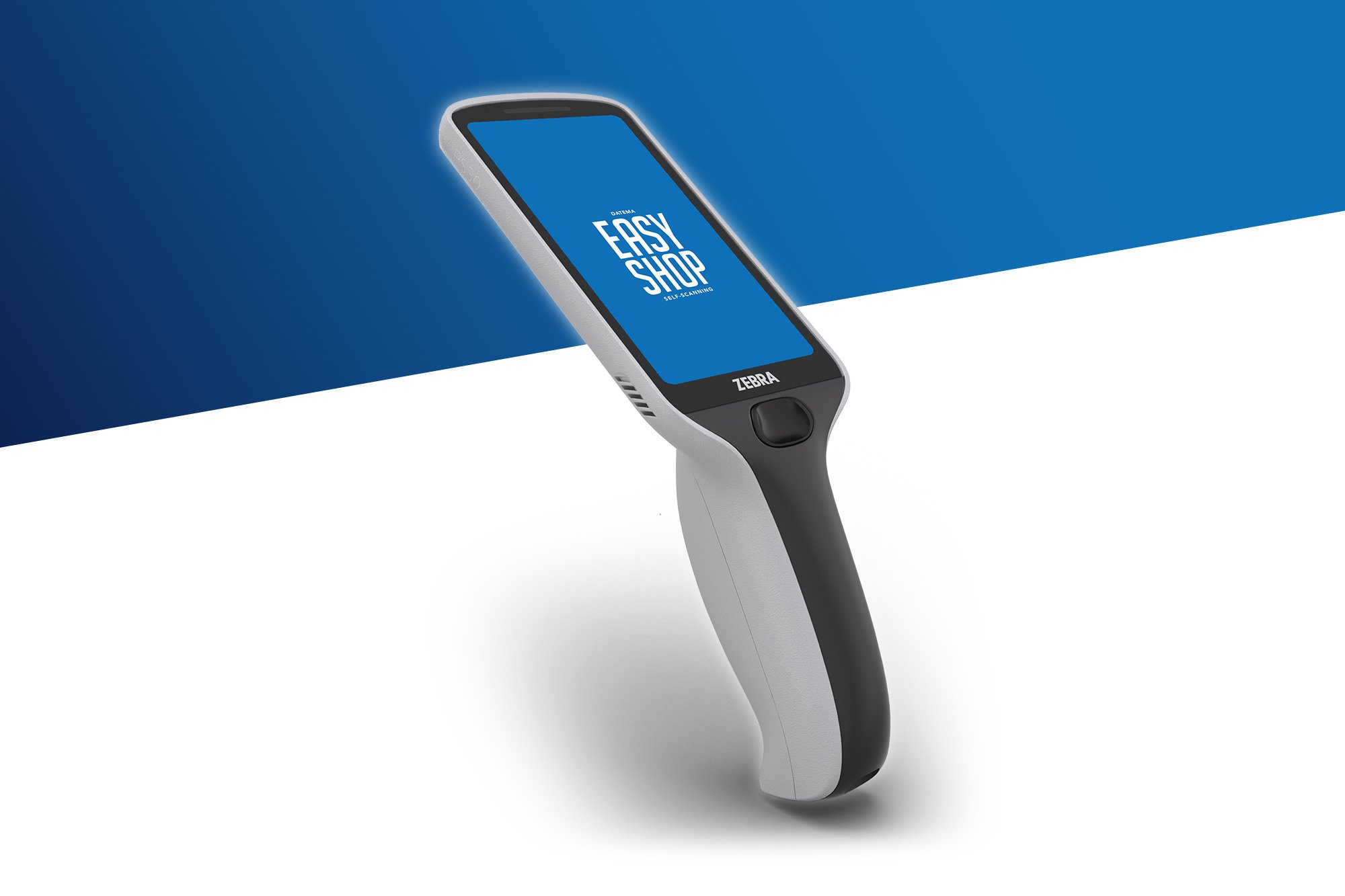Zebra PS30: Enhancing the self-scanning experience
This January, Zebra Technologies announced their next generation of self-scanning devices: The PS30 Personal Shopper Series. The device was first showcased officially at the NRF 2024: Retail’s Big Show, and quickly became one of the most talked-about devices during these days.
But what is new with this device, and how does it compare to its predecessor? Moreover, how will the PS30 make shopping better for the end-users? Learn all about the Zebra PS30 here!
New slim design – but larger screen
As always when Zebra Technologies launches a new self-scanning device, the design has been improved- and the PS30 is no exception. With the new sleek design, the PS30 sets a new standard for self-scanning devices, and we are expecting competitors’ devices to follow.
One of the reasons PS30 looks quite different compared to its predecessor, the PS20, is the increased screen size. The screen of the PS30 is more than 25% larger than the screen of the PS20, which allows for more use of the comprehensive features- and greater encouragement to try these out.
“It is clear that Zebra wants users to interact more with the various features available – the device is not only for scanning, but for a better shopping experience. The bigger screen adds to a greater user experience, and could potentially encourage more shoppers to try out the available functions.”, says Fredrik Englund, Manager at Datema Retail.
What is possible with Zebra PS30?
Besides for enhancements to the hardware itself, such as higher RAM/flash memory, there are also improvements regarding the available features of the PS30 device. This new device has kept the best parts of the PS20, and added further improvements.
As with the PS20 devices, it is possible for shoppers to access these things:
Shopping lists
Dietary information
Clip coupons
A new enhancement with the PS30, with the goal of making the shopping experience easier, is the improved location sensor data.The sensors allow for a variety of features, beneficial for both shoppers and retailers:
Real-time directions: Shoppers can get real-time directions to items located in the store; making it easier and quicker for shoppers to find the desired items. This is something that previously has not been possible.
Integrated map: A way to utilise the sensors is an on-screen map with the store layout, with a dot indicating where the shopper is located. Based on this information, the shopper could select products or areas for additional directions.
Location-based offerings: Depending on where in the store a shopper is located, on-screen offerings could appear, for example with discounts on nearby products. This would be a way for shoppers to get the best deals, and for retailers to encourage an increased number of items in the shopping basket.
Consumer behaviour insights: For retailers, the improved location sensors makes it is possible to gain better data regarding the purchasing behaviour of the shoppers – and to see how shoppers move around in the store. Based on these insights, retailers can improve the store layout for an increased basket size.
“This is a great step forward in terms of user-friendliness – we know that there is more to self-scanning than simply the scanning process. The new Zebra device will work seamlessly with our self-scanning software – and all features that follows.”, says Fredrik Englund.
Tap-to-pay – a real game-changer
Following the consumer pattern of shoppers wanting less friction regarding payments, the new Zebra PS30 also supports tap-to-pay. This makes it possible for shoppers to complete the purchase without having to use an external payment tower or similar setup. This is another step in the direction of frictionless shopping – the purchases can be completed instantly by using NFC technology.
What about the charging infrastructure?
As some retailers find themselves with units that are in need of an upgrade, or to be switched out completely, the question regarding the charging infrastructure arises: can anything from the existing setup be re-used?
The PS30 device is compatible with existing Zebra PSS charging infrastructure, meaning that retailers does not need to invest in all-new infrastructure. This makes it possible to keep some of the functioning self-scanning devices, and to replace those that are too old.
Will the Zebra PS30 device work with EasyShop self-scanning software?
While the PS30 offers a variety of features and improvements for both retailers and their customers, there is a need for a compatible self-scanning software. For many retailers using PS20, EasyShop self-scanning solution has been the go-to software. So will the EasyShop software be compatible with the PS30 as well?
Yes, the EasyShop software will work together with the Zebra PS30 – already from start. As the EasyShop software works with both self-scanning devices and smartphones, the software is continuously updated to fit new product models and devices.
As Zebra are expected to begin the rollout of the Zebra PS30 sometime during 2024, shoppers have plenty of improvements and exciting features to look forward to. The benefits of self-scanning have been voiced numerous times, and new devices are likely to improve its popularity even more.
“Zebra Technologies provides retail technology solutions to major retailers all over the world, this product will surely affect both retailers and their shoppers positively.”, says Fredrik Englund, Managing Director at Datema Retail.
It is clear to say, there are exciting things ahead - for shoppers, self-scanning, and for retail technology in general!
Learn more about self-scanning:




